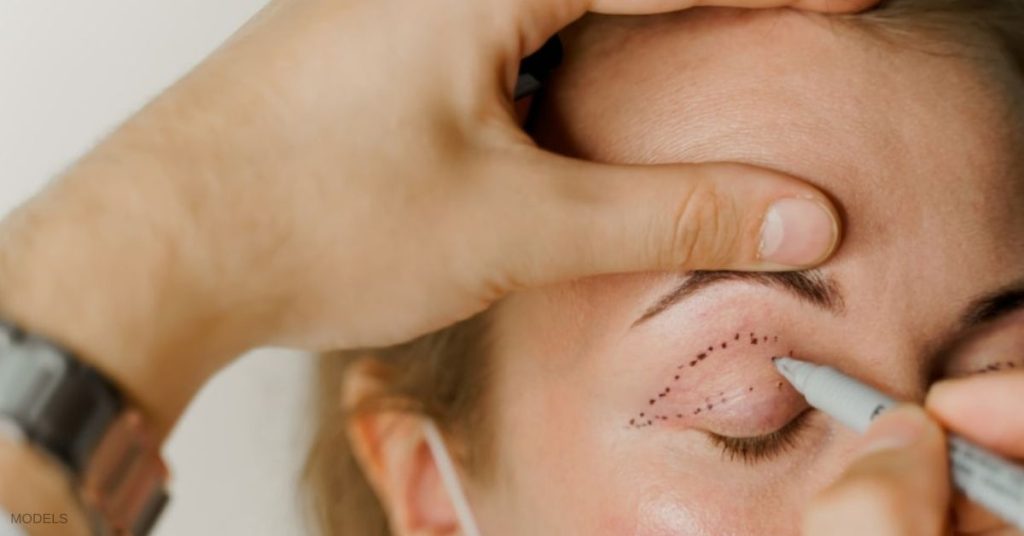Eyelid surgery, known clinically as blepharoplasty, can restore a more youthful and refreshed appearance to my patients by addressing irregularities in the delicate skin around the eyes. This popular procedure comes in multiple variations and is tailored to the patient’s unique cosmetic or functional goals. In this blog post, we cover your eyelid surgery options.
What Are the Different Types of Eyelid Surgery?
Upper and lower blepharoplasty target sagging, drooping, and puffiness to create a more vibrant look. Some patients want to look more rested by “brightening” the eye area, while others pursue this surgery to treat vision-related issues caused by overhanging skin (eyelid ptosis).
Blepharoplasty can treat the lower eyelids and upper eyelids separately or in the same operation. Its sister procedure, double eyelid surgery (also known as Asian eyelid surgery), addresses epicanthic folds to create an eyelid crease in patients of predominantly Asian descent.
Who Is a Good Candidate for Upper Eyelid Surgery?
Upper blepharoplasty targets the upper eyelids, removing excess skin and fat that can create a tired or aged appearance. This procedure is ideal for patients with:
- Sagging or drooping upper eyelids
- Skin or muscle laxity that impairs vision
- Puffiness in the upper eyelids
Upper blepharoplasty creates a more alert and youthful look. The procedure typically involves making an incision along the natural crease of the upper eyelid, removing excess tissue, and tightening the remaining skin. In some cases, it is combined with a brow lift to further refresh the upper face.
Who Is a Good Candidate for Lower Eyelid Surgery?
Lower blepharoplasty significantly reduces the appearance of tiredness and restores a smoother contour to the lower eyelids.
Ideal candidates have:
- Bags or puffiness under the eyes and related shadows
- Sagging or drooping lower eyelids
- Wrinkles and fine lines around the lower eyelids
For lower blepharoplasty, the incision is usually made just below the lower lash line or inside the lower eyelid (transconjunctival approach), allowing for the removal or repositioning of fat and the tightening of skin and muscle.
Upper vs. Lower Blepharoplasty: Why Not Both?
A quad blepharoplasty treats both sets of eyelids for the most comprehensive improvements. During your consultation, your plastic surgeon will evaluate whether you are a good candidate for each procedure and whether a combination approach will bring you closest to your ideal look.
Double Eyelid Surgery
Double eyelid surgery, or Asian blepharoplasty, is a specialized form of upper eyelid surgery that creates a natural-looking crease in the upper eyelid. This procedure is popular among individuals of Asian descent who may have a monolid and desire a double eyelid appearance.
It’s essential to choose a surgeon experienced in this intricate technique to achieve results that respect and enhance your unique ethnic features. Learn more about this procedure in our related blog post.
Recovery From Eyelid Surgery
Lower blepharoplasty recovery and upper blepharoplasty recovery follow roughly the same trajectory. Generally, eyelid surgery patients can expect:
- Swelling and bruising for the first 1 to 2 weeks
- Mild discomfort, which can be managed with prescribed medication
- Stitches removed after about a week
- Return to normal activities within 2 weeks
It’s important to follow all postoperative care instructions closely, including keeping your head elevated, applying cold compresses, and avoiding strenuous activities until you are fully healed.
Considering Blepharoplasty?
If you’re contemplating eyelid surgery, it’s crucial to have a thorough consultation with an experienced, board-certified plastic surgeon to discuss your goals and determine the best approach for your needs. My team and I are here to guide you through the process and answer any questions you may have. Request a consultation online or call us at (415) 441-1888 to discuss how blepharoplasty can help you achieve your aesthetic goals.





Leave a Reply